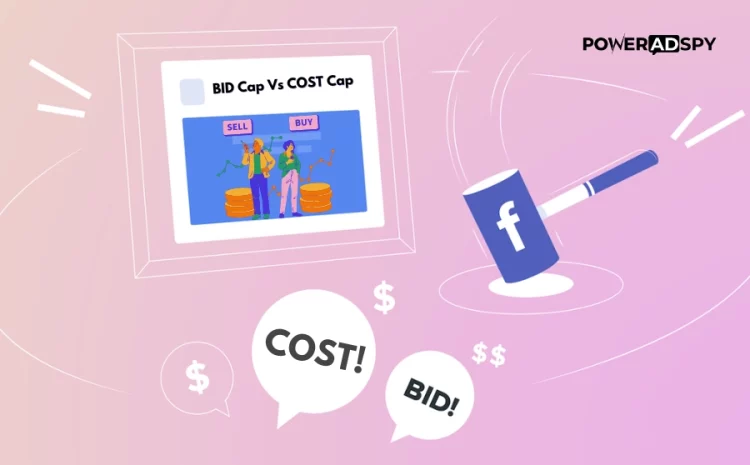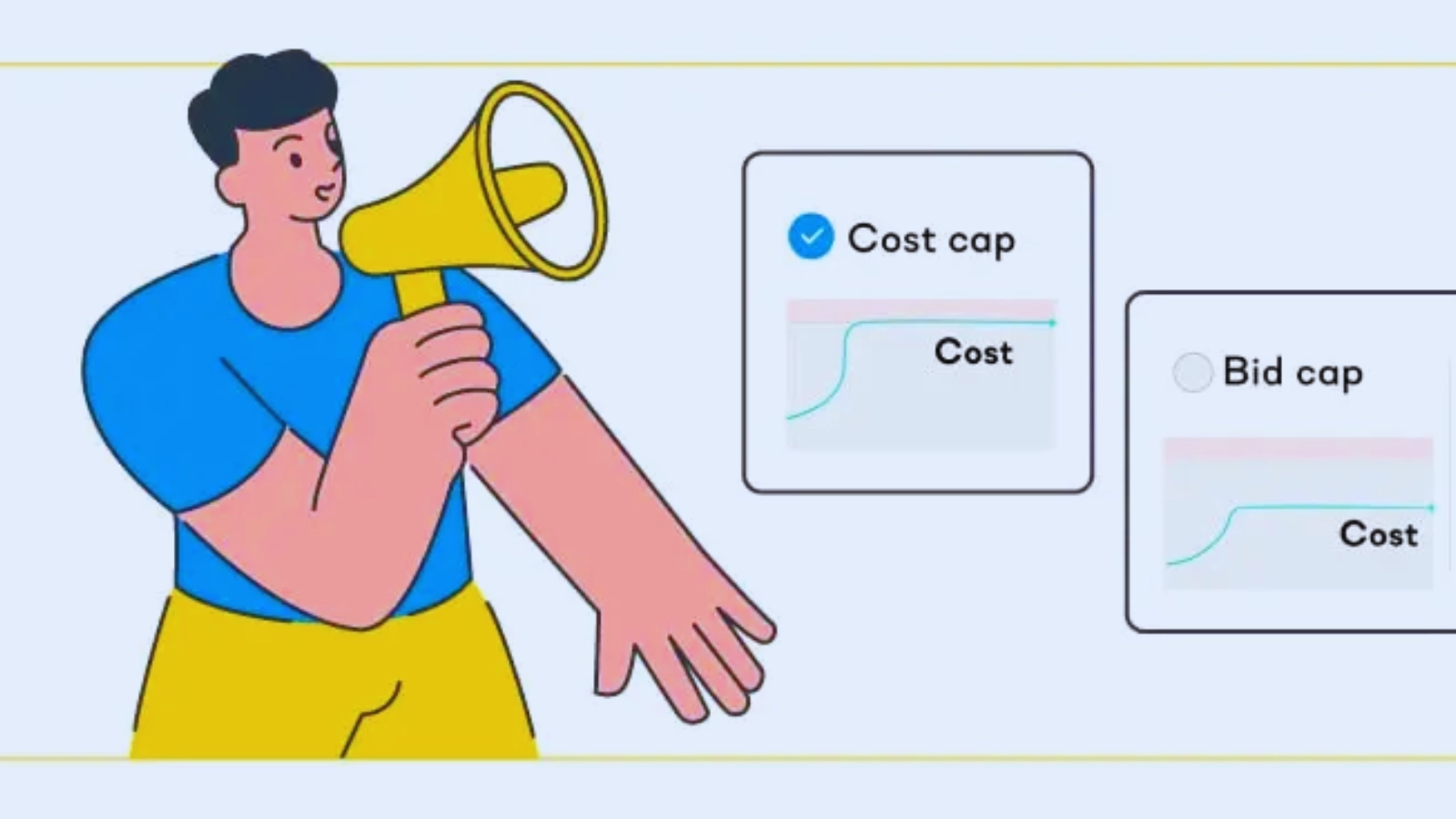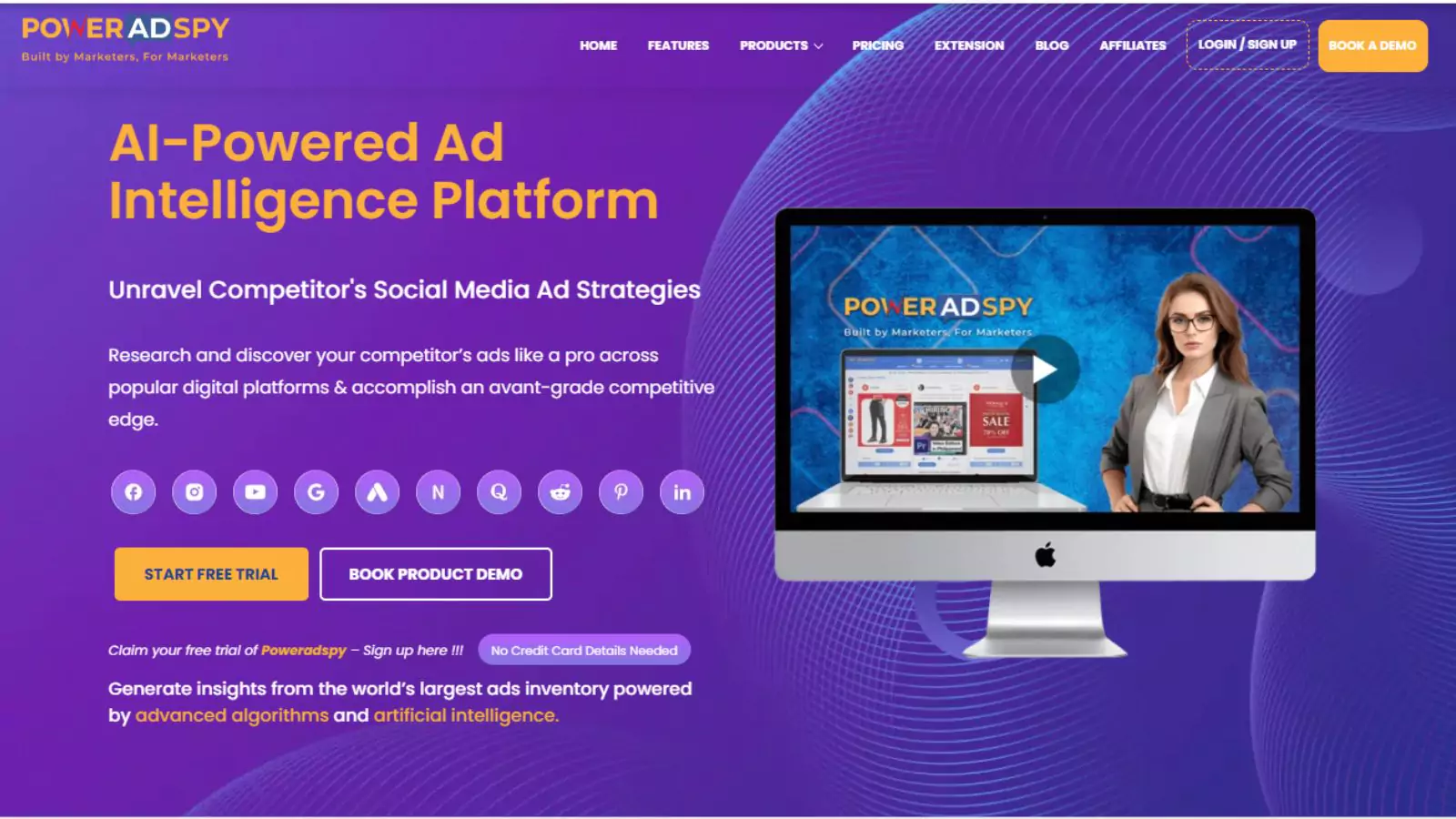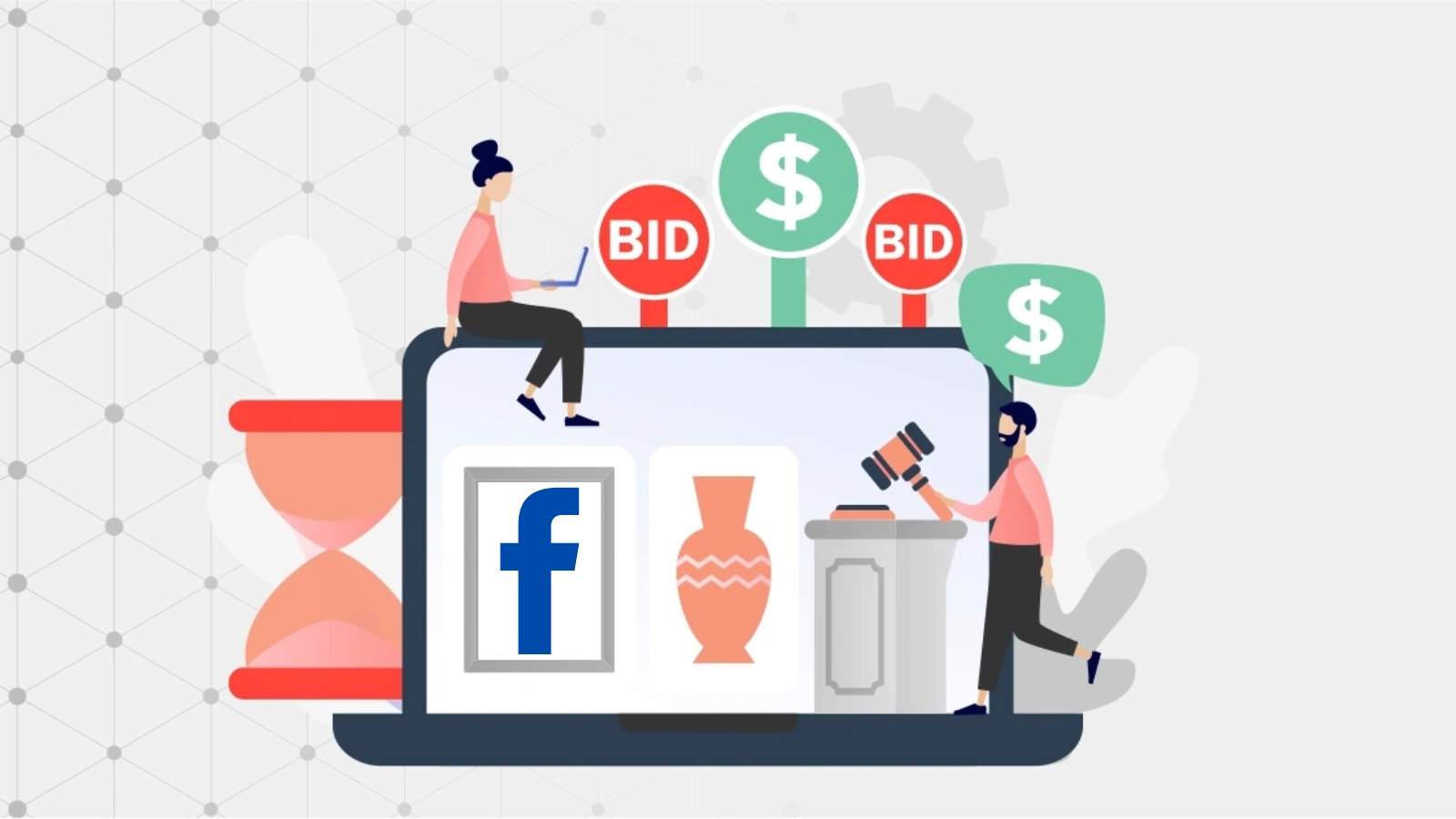Bid Cap Vs Cost Cap: Which One Is Better For Marketers?
A balance between cost efficiency and performance is daunting in this ever-evolving digital advertising landscape. Marketers constantly strive to optimize their campaigns, ensuring that every dollar spent yields the highest possible return on investment (ROI). Two pivotal strategies in this optimization process are Bid Cap and Cost Cap. These are integral tools in ad spend control, yet they serve distinct purposes and require different approaches. However, with time the comparison between bid cap vs cost cap has become a norm in the marketing evolution.
These terms often surface in discussions around pay-per-click (PPC) campaigns and broader digital marketing strategies. Understanding their differences and applications can significantly impact the success of your advertising efforts.
In this blog, we will delve into the intricacies of Bid Cap and Cost Cap. You will clearly understand how to leverage them to optimize your ad campaigns and achieve your marketing objectives without overshooting your budget.
So, let’s get started!
Listen To The Podcast Now!
What Is Bid Cap & Cost Cap?
Before diving into the differences between Bid Cap vs Cost Cap, it’s essential to understand what each strategy entails.
Cost Cap is a bidding strategy used in Facebook Ads that sets a maximum cost per optimization event, such as a click or conversion. This approach allows advertisers to manage their expenses while aiming for their desired outcomes. Essentially, it enables control over the costs without compromising on optimization.
Bid Cap, on the other hand, sets a maximum bid limit for each ad set. This means that Facebook will strive to achieve the lowest cost per result while adhering to the specified bid limit. Both strategies offer unique benefits and drawbacks, making the choice between them dependent on campaign goals, target audience, and ad budget.
In the next section, we’ll learn the differences between Cost Cap and Bid Cap, examining their advantages and disadvantages. It will help you make an informed decision on which strategy to use for your Facebook Ads campaigns.
What Is The Difference Between Cost Cap And Bid Cap?
Understanding the distinctions between the bid cost vs cost cap becomes imperative when delving into Facebook advertising strategies. These two approaches represent distinct methodologies in managing ad spending and optimizing campaign performance.
The bid cap sets a maximum bid limit for each ad set, dictating the highest amount advertisers are willing to pay per bid. In contrast, a cost cap establishes a maximum cost per optimization event, such as a click or conversion, and aims to control the average price per result achieved.
In the realm of bid vs cost cap, the choice between them often hinges on the nature of the campaign and its budgetary constraints. Bid cap finds utility where advertisers seek precise control over bid amounts, particularly in competitive markets where costs can escalate rapidly.
By setting a strict upper limit on bidding, advertisers can mitigate the risk of overspending and maintain a more disciplined approach to budget management. Conversely, a cost cap proves advantageous for campaigns with fixed budgets, as it allows advertisers to set a predetermined maximum cost per result, ensuring that overall spending remains within specified bounds.
When Should You Use Bid Cap vs Cost Cap?
While both tactics offer means to regulate your Facebook Ads expenditures, specific circumstances may dictate the superiority of one over the other.
When to Use Cost Cap:
- If you operate within a fixed budget and aim to maximize your results, opting for a cost cap is advantageous.
- When your objective is to achieve a predetermined number of results at a consistent cost, employing a cost cap aligns with your goals.
- Leverage automated bidding and desire enhanced control over your expenses. A cost cap can furnish you with the desired level of control.
When to Use Bid Cap:
- When your budget is flexible and attaining the lowest cost per result is paramount, bid cap between bid cap vs cost cap emerges as the preferable choice.
- When targeting a broad audience and striving to maximize your reach, bid caps effectively reach a large audience.
- Conduct tests across multiple ad sets to identify top performers. Bid cap facilitates data-driven decision-making in such scenarios.
Remember that your ideal Facebook bid strategy may change as you navigate your advertising journey. Adapting your bidding approach is crucial as you accumulate more data and glean insights into what truly engages your audience.
Utilizing tools like PowerAdSpy can provide invaluable competitive intelligence, allowing you to stay ahead of the curve and refine your bidding strategy for maximum impact.
PowerAdSpy- Advanced Ad Intelligence Tool
PowerAdSpy is a Facebook ad spy tool designed to empower marketers with valuable insights into their competitors’ Facebook advertising strategies, including bid cap vs cost cap.
Here’s an overview of how PowerAdSpy works and its key features:
-
Ad Database
PowerAdSpy boasts an extensive database of millions of Facebook ads, allowing users to access a vast repository of ad creatives across various industries and niches.
-
Advanced Search Filters
Users can utilize advanced search filters to refine their search based on specific criteria such as ad text, ad type, engagement level, and more. This feature enables marketers to pinpoint ads that closely match their target audience and campaign objectives.
-
Ad Performance Analytics
PowerAdSpy provides comprehensive analytics on ad performance metrics such as engagement, likes, shares, views, comments, and more. This data helps users evaluate the effectiveness of competitors’ ads and identify successful strategies to emulate or avoid bid cap vs cost cap.
-
Ad Tracking and Monitoring
Marketers can track competitors’ ads over time to monitor changes in messaging, creative elements, and promotional offers. This feature allows real-time insights into competitors’ advertising tactics and helps inform strategic decisions.
-
Competitor Analysis
PowerAdSpy enables users to analyze competitors’ ad strategies comprehensively, targeting options, landing pages, and more. This competitive intelligence empowers marketers and adapts their strategies accordingly.
-
Saved Searches and Alerts
Users can save their favorite searches and set up alerts to stay updated on new ads. This feature ensures that marketers never miss out on relevant insights and opportunities in their niche.
PowerAdSpy, a powerful ad spy tool for marketers who want to gain a competitive edge in the Facebook advertising landscape. With its extensive database, advanced search capabilities, and in-depth analytics, PowerAdSpy enables users to uncover valuable insights, optimize their ad campaigns, and achieve better results.
Advantages of Bid Cap And Cost Cap
When deciding between a bid cap and a cost cap for your Facebook Ads campaigns, understanding the unique advantages of each can help you make an informed decision. Let’s compare the benefits of bid cap vs cost cap side by side:
Advantages of Bid Cap:
-
Precise Cost Control
Bid cap offers advertisers strict control over bid amounts, ensuring they do not exceed predetermined limits for each ad set.
-
Flexibility in Budget Allocation
With a bid cap, advertisers have the flexibility to allocate their budget strategically, adjusting bids for individual actions or audience segments as needed.
-
Optimized Performance
A bid cap can help advertisers maximize performance and achieve their campaign objectives efficiently by aiming for the lowest cost per result within the specified bid limit, highlighting the effectiveness of the bid cap vs cost cap.
Advantages of Cost Cap
-
Budget Certainty
The cost cap gives advertisers certainty over their budget by allowing them to set maximum Cost Per Acquisition (CPA) or Cost Per Install (CPI) limits.
-
Simplified Bidding Process
Cost cap streamlines the bidding process by eliminating the need for complex real-time adjustments, making campaign management more straightforward.
-
Balanced Performance
With a cost cap, advertisers can balance cost control and achieve desired conversion volumes, maximizing overall campaign results.
While a bid cap provides precise cost control and flexibility in budget allocation, a cost cap offers budget certainty and simplifies the bidding process. The choice between bid cap vs cost cap ultimately depends on the specific objectives and preferences of advertisers, as well as the nature of their campaigns.
By understanding the distinct advantages of each approach, advertisers can make strategic decisions to optimize their Facebook Ads campaigns for success.
Disadvantages Of Bid Cap And Cost Cap
Here are the disadvantages:
Bid Cap Drawbacks:
-
Less Budget Flexibility
Bid caps impose limitations on reallocating budgetary allocations, reducing maneuverability in managing ad spending effectively.
-
Reduced Ad Visibility
Implementing bid caps may result in fewer ad impressions, potentially limiting the reach and visibility of your campaigns.
-
Ongoing Monitoring Required
Utilizing bid caps necessitates continuous observing of ad performance to ensure campaigns remain on track, requiring frequent adjustments as needed.
Cost Cap Limitations
-
Limited Bid Flexibility
The primary focus of cost caps on controlling costs within specified CPA or CPI limits, bid cap vs cost cap, may restrict flexibility in adjusting bids for individual actions or audience segments, potentially impacting campaign reach and efficiency.
-
Algorithm Dependency
Achieving optimal results within set CPA or CPI limits relies heavily on Facebook’s algorithm. While generally effective, this reliance necessitates trust in the algorithm’s decision-making, which may not align with all advertisers’ preferences.
-
Less Strict Bid Limits
Cost caps may lack the precision needed for strict bid limits on various actions, primarily designed for managing overall CPA or CPI limits rather than precise bid adjustments.
While bid caps emphasize control over bid amounts, they may restrict flexibility and ad visibility. Conversely, while cost caps offer control over costs and simplified bidding processes, they may not provide sufficient precision for strict bid control on individual actions.
Advertisers must consider these factors carefully when selecting the appropriate campaign Facebook bidding strategy.
Bid Cap vs Cost Cap: Choose the Right Bidding Strategy
When navigating Facebook advertising, deciding between bid caps and cost caps hinges on your campaign objectives and budget management preferences. Let’s dissect the disparities between these two approaches:
1. Bid Cap:
- Allows placing a maximum limit on the bid amount for specific actions like clicks, impressions, or conversions.
- Offers precise control over bids, ensuring adherence to predetermined cost thresholds.
- It is ideal for tightly managing bid costs and maintaining a strict campaign budget.
2. Cost Cap:
- Empowers setting the maximum Cost Per Acquisition (CPA) for purchases.
- Facebook’s algorithm endeavors to keep the average CPA below the specified cap while optimizing for conversions.
- Specifically beneficial when aiming for specific CPA targets and seeking to uphold the average CPA within budget constraints.
Selecting the appropriate strategy depends on your campaign goals:
Use Bid Cap: When prioritizing control over the cost of each individual action (e.g., cost per click or conversion) and when specific performance targets for each action are paramount.
Use Cost Cap: When operating within a fixed budget and aiming to maximize results within those constraints. Cost caps offer flexibility in budget distribution across different ad sets or campaigns while ensuring the average CPA aligns with budgetary goals.
The choice between bid caps and cost caps hinges on your goals and budgetary considerations. Both strategies can yield favorable results when employed effectively, and in some cases, utilizing both within a single campaign may serve specific objectives.
Read More
How To Monitor Ad Budget For Optimal ROI?
The LayMan’s Guide: Facebook Ad Bidding Strategies (Lowest Cost And Target Cost)
What Are The Factors Affecting Bid Cap Vs Cost Cap?
The decision between leveraging cost caps and bid caps is pivotal and often guided by specific campaign objectives in Facebook advertising. Let’s dissect the key considerations:
1. Understanding Cost vs. Conversions
The fundamental distinction between cost cap and bid cap revolves around cost control versus result optimization. Cost cap empowers advertisers to set maximum limits on the cost of actions, while bid cap focuses on controlling the bid amount for visibility. Your choice between the two hinges on whether you prioritize cost management or achieving specific results.
2. Evaluating Your Campaign Goals
Your campaign objectives play a significant role in determining the most suitable bidding strategy. Meticulous control over individual conversions is paramount, a bid cap may be a preferred option. Conversely, if maximizing conversions within a fixed budget is the goal, cost cap offers a streamlined approach.
3. Testing and Data Analysis
While industry insights provide valuable guidance, your testing results should inform your bidding tactics. Analyze the performance bid cost vs cost cap strategies to ascertain which aligns best with your campaign objectives and yields optimal results.
4. Balancing Control and Convenience
Consider the trade-off between manual input and automated bidding processes. Cost cap offers convenience through automated bidding, while bid cap provides granular control over bid management. Assess your resource availability and campaign complexity to determine the most practical approach.
5. Targeting Focus
The scope of your targeting efforts influences your bidding strategy. The cost cap accommodates broader targeting, making it suitable for campaigns aiming for widespread reach. In contrast, bid cap caters to marketers with specific audience criteria and emphasizes precision. Tools like PowerAdSpy can further enhance this approach by providing insights into competitors’ ads, helping you fine-tune your targeting strategies
6. Upper Spending Limit per Ad
Maintaining an upper spending limit per ad is crucial for budgetary control. A bid cap ensures bids remain below predefined spending thresholds, safeguarding against exceeding budget constraints.
7. Campaign Timeframe
Long-term campaigns may benefit from the gradual spending pace of cost cap bidding, whereas bid cap may be more suitable for short-term initiatives requiring rapid results.
8. Bidding Tactics
Tailor your bid cap vs cost cap bid strategy to align with your campaign goals and financial constraints. Experiment with bid caps set slightly above desired costs for optimized results, or opt for cost caps to ensure consistent spending within predefined limits.
9. Cost-Effectiveness vs. Predictability
Cost cap prioritizes cost-effectiveness by controlling final costs, while bid cap offers consistency and predictability in bid management. Consider your preference for cost control versus bid stability when selecting the appropriate bidding strategy.
In summary, the decision between cost cap and bid cap hinges on a thorough assessment of your campaign objectives, budgetary considerations, and resource availability. By weighing these factors carefully, you can devise a bidding strategy that maximizes campaign performance and aligns with your overarching marketing goals.
Bid Cap Vs Cost Cap: Wrapping Up
When you evaluate bid cap vs cost cap, align your choice with your specific campaign objectives and budget flexibility. A bid cap offers precise control over bid amounts, making it ideal for tightly managed budgets and specific performance targets.
Conversely, a cost cap prioritizes cost efficiency and maximizes results within a set cost per action suitable for campaigns with fixed budgets and broader goals. Both strategies have unique advantages and drawbacks, and understanding these can help you select the most effective approach for your Facebook advertising campaigns.
By evaluating the pros and cons of each strategy and aligning them with your specific goals, you can devise a bidding approach that maximizes ROI and drives campaign success.










